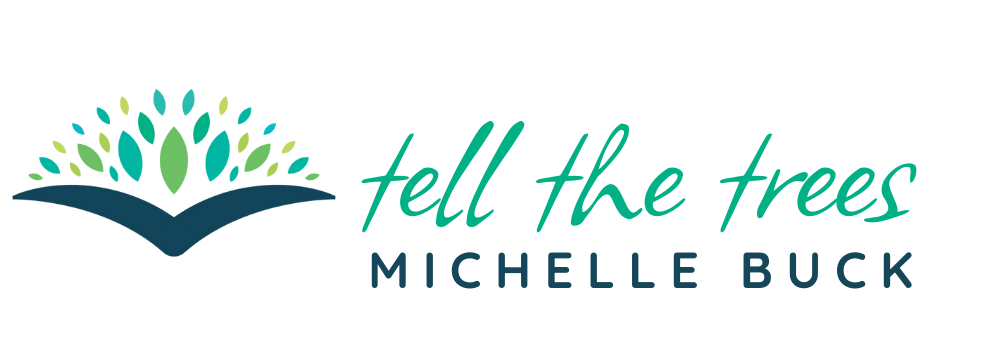by Michelle
Share
by Michelle
Share
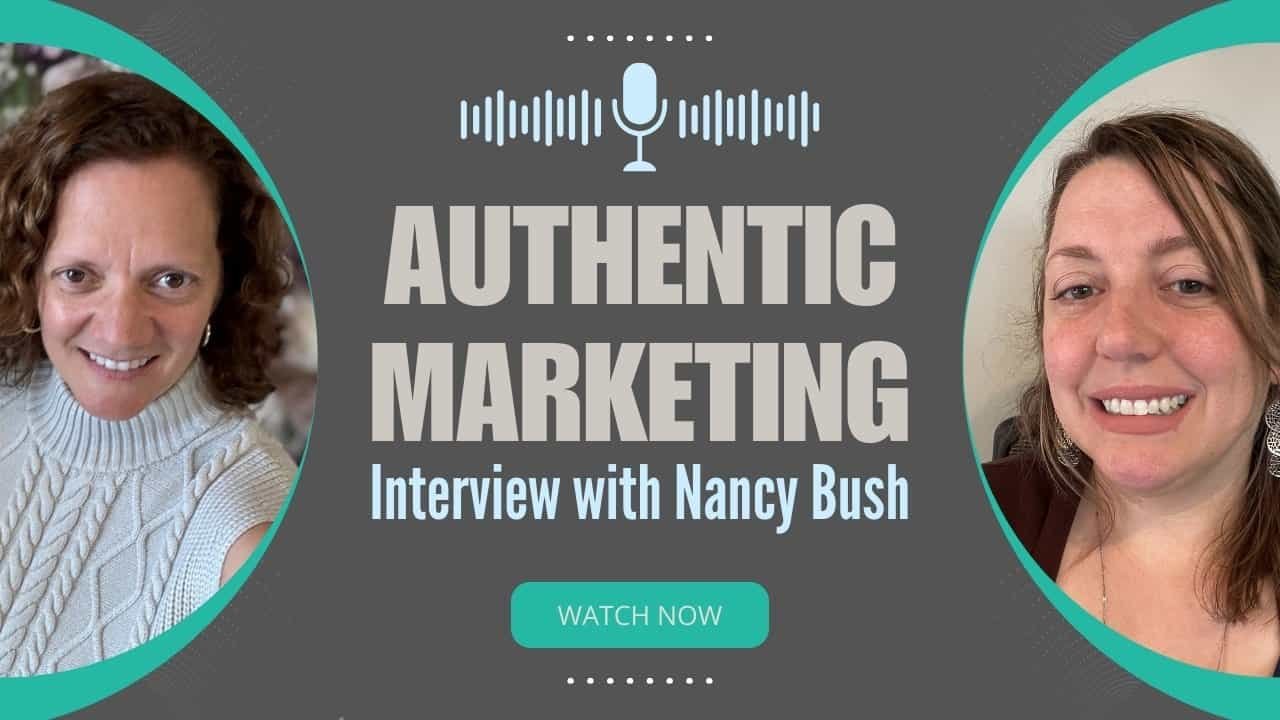
I recently had the pleasure of being interviewed by Nancy Bush, a talented email copywriter who specializes in improving email deliverability and helping her clients with effective email marketing strategies. Nancy is certified as an Email List Manager by Troy Ericson and is also certified through Write Your Way to Freedom, a comprehensive copywriting program.
In our conversation, we explored how authors and wellness professionals can market themselves authentically without compromising their values. I wanted to share some of the key insights from our discussion that might help you in your own marketing journey.
What Personal Branding Really Means
When we hear the term “branding,” many of us immediately think of visual elements like logos and color schemes. But personal branding goes much deeper than that. It’s about authentic connections and creating genuine relationships.
“Personal branding is authentic, focusing on your connections, creating those genuine relationships. It follows you wherever you go. So whether you’re at a job, or you’re starting your own business, or you’re just out in the community, that’s encompassing your personal brand, whether you’re being intentional about that or not.”
Your personal brand is the authentic way you show up in the world. The beauty of personal branding is that it grows and changes with you.
Even if you’re not intentional about it, you likely already have a personal brand. Think about people who run book clubs or organize community activities—people know them for something specific and might even ask for their advice.
As a wellness professional or author, your unique viewpoint is what makes you stand out. While you might be talking about similar topics as others in your field, your personal experiences, values, and perspective make your brand uniquely yours.
Authenticity: Your Greatest Advantage
Authenticity gets thrown around a lot in marketing circles, often becoming just another buzzword. But what does it really mean to be authentic in your marketing?
“I define authenticity as kind of aligning with my purpose and the people that I serve. And if I’m following that, then I’m being authentic.”
In today’s digital world, people are craving genuine connection. Studies have shown that despite being more connected than ever through technology, many people report feelings of loneliness. This presents an opportunity for wellness professionals to create authentic connections that truly help people with real problems.
When you’re authentic in your messaging, people feel seen. They recognize that you understand their challenges because you speak their language and address their specific concerns.
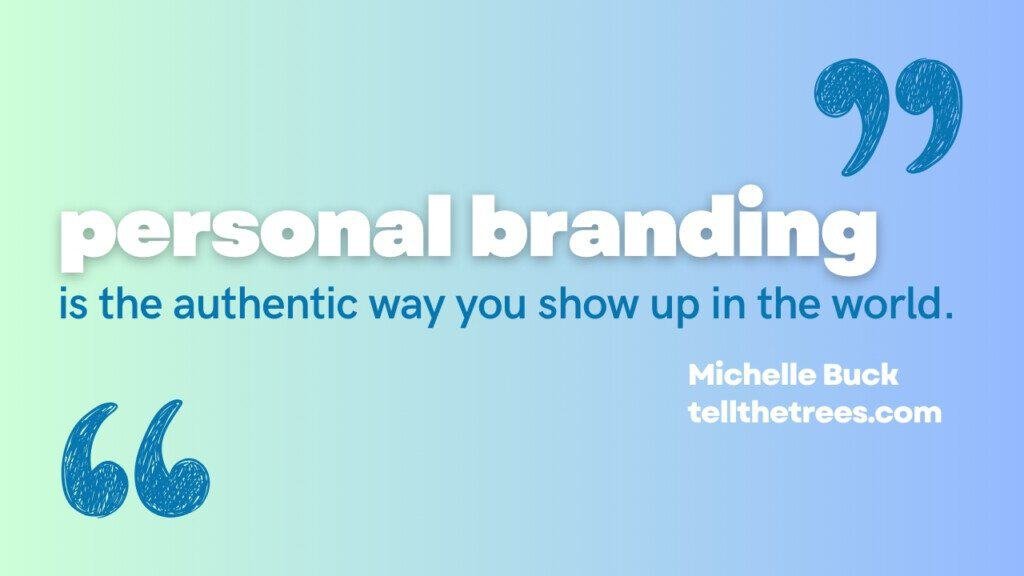
Finding Your Unique Value with Authentic Marketing
Rather than looking outward at what others are doing, focus inward on your own strengths and values. Pay attention to what people have thanked or praised you for in the past—these acknowledgments often reveal your unique strengths.
A powerful exercise is to remember yourself before you became an expert. If you’re a wellness professional, think about where you were when you started your journey. What challenges did you face? This reflection helps you better understand your audience and the unique value you bring to them.
Testimonials can act as mirrors, reflecting back what clients value most about working with you. These insights can guide your messaging and help you emphasize what truly sets you apart.
Understanding Your Audience Deeply
Being genuinely curious about your audience is essential. If you already have an audience, ask them questions and truly listen to their responses. Engage in real conversations rather than always talking at them.
If you’re just starting out, explore platforms like Facebook, Quora, or Answer the Public to see what questions people are asking about your niche. Pay close attention to the specific language they use to describe their problems—this will help you create content that resonates with them on a deeper level. (It’s also great for SEO as this is how people search online.)
When you use the exact words and phrases your audience uses, they immediately feel understood. They think, “That’s exactly how I feel. That’s exactly what I experienced.”
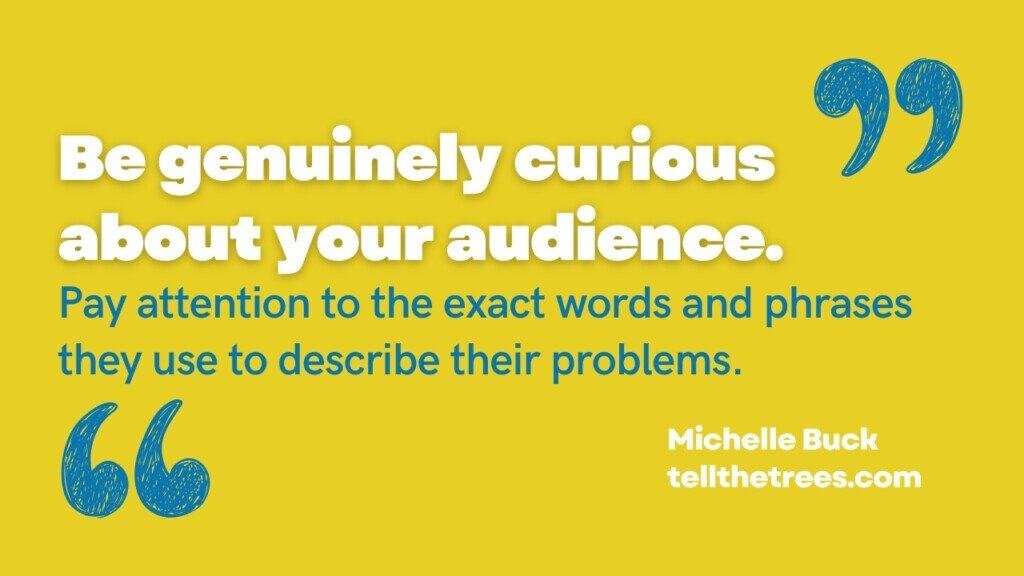
Communicating Your Value Authentically
When describing your offerings, focus on the transformation rather than just listing features. What changes will clients experience? How will their lives improve after working with you?
Include testimonials that highlight these transformations. Let potential clients see how others have benefited from your services or products.
One helpful tip is to record yourself explaining your business conversationally. If it sounds too “marketing-like” or inauthentic, rework it until it feels natural. Remember that you’re communicating with real people, not writing a formal essay.
When writing emails or website copy, imagine you’re speaking to one specific person. This helps create that one-on-one conversational feel that resonates with readers.
Creating a Visual Identity That Reflects You
Your visual branding should evoke the feelings that align with your core values. Is your brand calm, energetic, strong? These characteristics can guide your color choices and overall aesthetic.
“I like to use Pinterest because if you go on Pinterest and start pulling up color palettes or lifestyle images, you’ll start to see a pattern of what you are actually attracted to.”
Create a board of colors, fonts, and images that attract you, and you’ll likely see patterns emerge that reflect your authentic style.
The most important aspects of visual branding are consistency and readability. Use the same colors, fonts, and images across all platforms to build recognition. And don’t overthink it—simple is often better than complex.
Marketing with the Right Social Media Platforms
One of the biggest mistakes entrepreneurs make is trying to be everywhere at once. Instead of spreading yourself thin across multiple platforms, focus on one platform where you can be consistent.
“Don’t try to be everywhere, because you’re going to lose people if you do that, especially when you’re posting the same message on every single platform. Platforms are all different and they have different styles. Pick one platform that you’re going to be consistent on to start.”
Consider both where you enjoy spending time and where your audience hangs out. If those two factors align, you’ve found your platform sweet spot.
I started out being active on multiple platforms and found that I wasn’t building substantial relationships anywhere. After some trial and error, I discovered that Substack was the right fit for me, and I’ve built my audience there rather than trying to maintain a presence everywhere.
Staying Consistent Without Burning Out
To avoid what I call “random acts of marketing” (throwing content everywhere hoping something sticks), set one or two specific goals each quarter. All your content should support these goals.
“Take one goal, maybe for a quarter, it could be a month, whatever the timeframe… whether it’s a monetary goal or a connection goal, or email list growth goal, whatever it is, and have that be the driving force behind your content.”
For example, if your quarterly goal is to grow your email list, focus your content creation efforts on lead magnets, nurture sequences, and content that drives sign-ups.
This approach gives you clarity and purpose, allowing you to break down larger goals into manageable daily tasks. It also prevents overwhelm and helps you evaluate what’s working and what’s not.
Building Community Through Your Personal Brand
Focus on building an engaged audience rather than chasing follower counts. Be clear about why you’re building these relationships and let that purpose guide your messaging.
Share your authentic journey, including challenges you’ve faced. This vulnerability makes you more approachable than someone who presents a perfect, polished image.
Create opportunities for real interaction by asking thoughtful questions, celebrating your community members’ wins, and connecting people who might benefit from knowing each other.
Making Networking Feel Natural
For many of us, especially introverts, traditional networking can feel intimidating. Instead of focusing on “networking,” approach interactions with empathy and genuine curiosity about the other person’s experiences.
When you’re truly interested in understanding someone’s challenges and circumstances, conversations flow more naturally and often lead to collaborative opportunities without forcing them.
Remember that authentic relationships take time to develop. Plant seeds through genuine interactions and allow connections to grow organically.
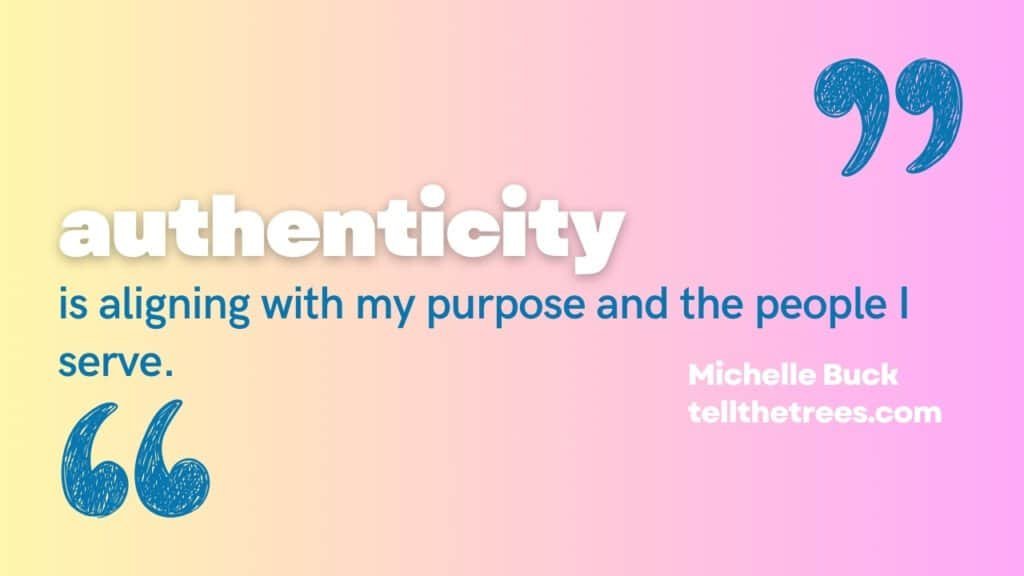
Creating Lasting Impact Beyond Social Media
To build a brand with lasting impact, consider creating frameworks or processes that can be shared widely. Books, training materials, and guides can continue to help people even when you’re not actively engaging with them.
Teaching classes, coaching individuals, or engaging with small groups in your community can create ripple effects as those you help go on to impact others.
Remember that if you can change one person’s life, you’re creating a much bigger impact than you might realize.
Staying Authentic While Growing
As your business grows and evolves, do quarterly check-ins to ensure your messaging still aligns with your core values. Be open with your audience about changes you’re going through and bring them along on your journey rather than making abrupt shifts.
When you communicate openly about your growth and evolution, you encourage your audience to be real with you as well, fostering deeper connections.
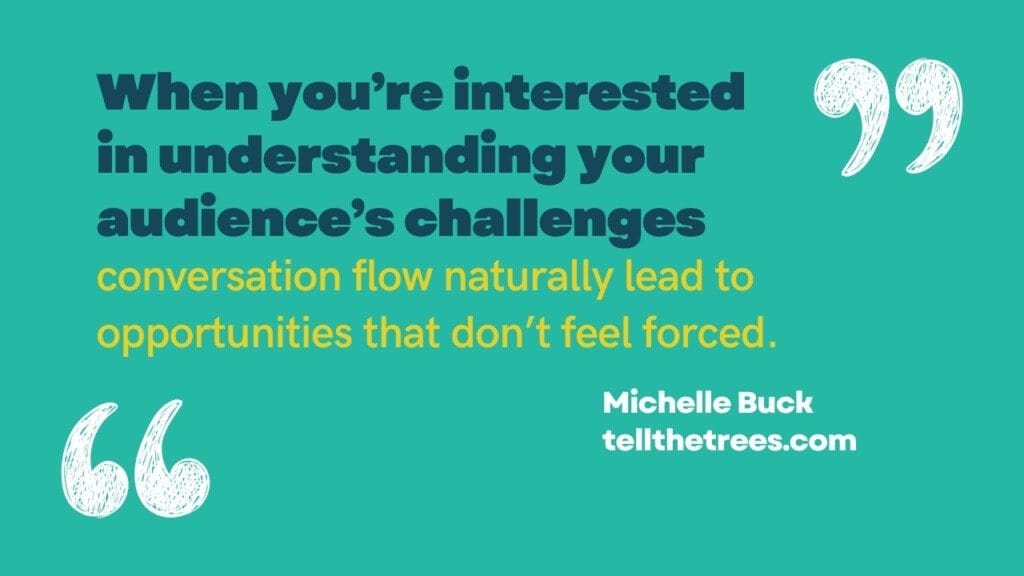
Converting Social Media Followers to Email Subscribers
Since social media platforms can change or disappear, it’s important to move connections to channels you own, like your email list. Create valuable lead magnets that address specific pain points your audience experiences.
Consider running free “sprints” or challenges with daily participation opportunities. These can demonstrate your value while building engagement and leading naturally to paid offerings.
One effective approach I’ve seen is offering participants in a free challenge the chance to win a membership to a paid program. This generates interest while providing genuine value upfront.
Final Thoughts
Marketing doesn’t have to feel inauthentic or aggressive. When you focus on building genuine connections, understanding your audience deeply, and communicating your unique value clearly, marketing becomes a natural extension of who you are and how you serve others.
Keep it simple, be consistent, and always let your authentic self shine through. That’s the true power of personal branding.
If you’d like to connect with Nancy Bush, you can find her at nancybushagency.com or on LinkedIn.
To learn more about authentic marketing approaches, check out my book “Authentic, Stand Out Without Selling Out” on Amazon.
Tell the Trees is supported by its readers. When you make a purchase using links on this site, it may result in affiliate commission. Please visit my affiliate disclosure page for more information.
Let's Discuss It
Accessibility isn’t just nice to have; in fact, it’s now more important than ever. In 2025, over 1.3 billion people worldwide live with some form of disability, and many use e-readers or screen readers to access digital content. Yet most self-published authors continue to create ebooks that unintentionally exclude these readers. Microsoft Word, a tool
After my post about the European Accessibility Act, I got some fantastic questions from you that made me realize we need to have a more practical conversation especially regarding digital products. My original post focused on what’s been published — either written by lawyers for lawyers or aimed at big publishers with compliance departments. But what
One of the most often missed topics when it comes to writing and your office workspace is productivity. As a writer, you are focused on drafting, editing, book covers, ARC Reviews, and other important self-publishing topics, we forget that there are more efficient ways to do things. In your office or writing space, you might
The biggest threat for authors on Substack isn't competition or algorithm changes. It's something far more basic: the platform itself. Let's learn more.
